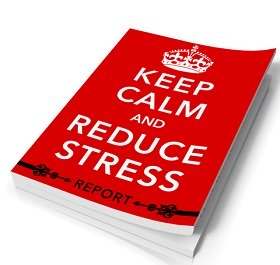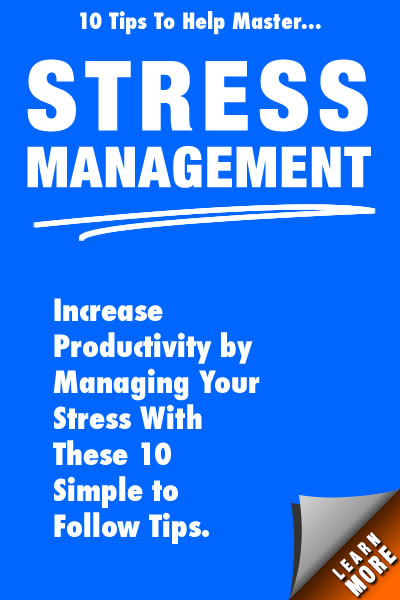How to Deal with Stress:
Getting Along with Others
In this article we are learning how to deal with stress when there is relationship conflict. We all have experiences where communication between two people disintegrates. But how can we develop strategies that allow us to deepen our understanding with others and see issues from another’s point of view without losing our own? Building healthy relationships requires effective communication skills and a commitment to mutual respect.
|
Take a look at the following communication awareness exercises adapted from the martial art of aikido by George Leonard. These four exercises symbolically demonstrate different ways to respond to threatening and stressful situations. The descriptions are paraphrased from Jon Kabatt-Zin’s, Full Catastrophe Living: Using the Wisdom of Your Body and Mind to Face Stress, Pain, and Illness. In these four scenarios, there is one person who is the aggressor and one who is receiving the aggression. Kabatt Zin describes an exercise he administered in his Stress Clinic. The physical behaviors represented are symbolic of different ways of dealing with stressful relationships. |
 Full Catastrophe Living: Using the Wisdom of Your Body and Mind to Face Stress, Pain, and Illness |
When learning how to deal with stress that arises among peers, the conflict in relationships is often caused by how your communicate. In each case, consider how you see yourself reacting. Do you find one of the following four patterns of behavior best resemble your reactions? Is there one pattern that most resembles the way you handle stressful relationships?
How to Deal with Stress Among Peers: Option 1
Let’s suppose you are in a confrontational situation. Here we recreate a scenario between you and another individual who is attacking you. The attacker is trying to overpower you, causing you stress. The attacker comes at you with arms stretched out trying to push you over by going straight for your shoulders. Your reaction to this attack is to lie down, symbolically indicating your perception that “It’s okay whatever you do, I’m to blame.” Or “don’t attack it was so-and-so’s fault.”
How to Deal with Stress Among Peers: Option 2
The second scenario is quite the opposite with you moving out of the way at the last second to avoid any physical contact from your aggressor. The attacker feels frustrated in this case, while you, the person being attacked, feels relieved to have avoided the confrontation. However, the attacker is still the aggressor and you remain passive in your response. The results of any conflict are not resolved, just avoided. There are many people who find that avoidance is their most comfortable way of dealing with stressful relationships.
How to Deal with Stress Among Peers: Option 3
Another solution to an attack is when you are being attacked you push back. As the attacker is going for your shoulders you push back with your arms extended, also. As the person being attacked, you dig in and both parties end up pushing each other. Have you ever felt like pushing back, saying “I’m right and you’re wrong!” This may feel like a better solution than the previous two options because neither party is being passive. Also, both parties are standing up for their own point of view. But is this a good way of relating to people on a regular basis?
How to Deal with Stress Among Peers: Option 4
George Leonard offers another solution called blending in aikido. This is a stress response that can provide more positive results. It requires that you become aware that the other person attacking you is the stressor, but that you stay fully mindful of your own perspective and try to view the situation as a whole. Blending, involves physically stepping into the attacker, positioning your feet so that you step toward, but also slightly to the side of the attacker at the same time you take hold of one of his outstretched wrists. This moment is called entering in aikido. Here you, the person being attacked, are demonstrating a willingness to be involved with the situation without avoiding things, and without trying to take complete control.
You are working together by your taking hold of his wrist and blending with the attacker’s energy. In this case you are turning with his momentum so that you are both facing in the same direction, still holding on to the wrist. At this moment both of you are seeing the same thing because you are both looking in the same direction. Now you become partners rather than adversaries in finding a solution, whether the other person wants to or not. Both parties maintain integrity in this last scenario and it opens communication options. By maintaining your sense of calm, you are at least in control of yourself and much less vulnerable from harm.
You may wish to keep a journal to identify patterns that trigger stress to arise in your daily life. Keeping track of the stressful events and your own thoughts, feelings and behavior while they are happening provides clues about how you can effective handle the stress as it develops.
Although these four options are symbolic representations of stressful confrontations—because we are not advocating physical confrontations—the options give you a sense of how you deal with stress among peers and respond.
By becoming aware of your patterns you can become more assertive in maintaining your own integrity and in creating open honest relationships where both parties are respectful of each other’s opinions. You will never get along with everyone, but finding those with whom you can communicate effectively and share your feeling in an objective and non-judgmental manner is a healthy component for lowering the stress that can build up in your life.
Solving Conflicts: Creating a Positive Outcome
Why You Need to Like Your Life
POPULAR PAGE
Stress Management Tools for Healthy Living
Join Calm Starts Here, and receive FREE How to Get a Good Night's Rest and Stop Worrying.
Share this Page on SheToldMe.com
Become a FaceBook Fan











